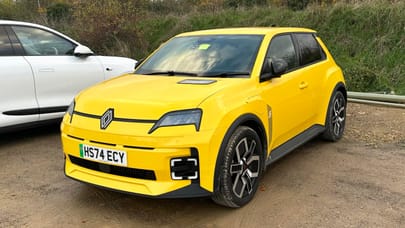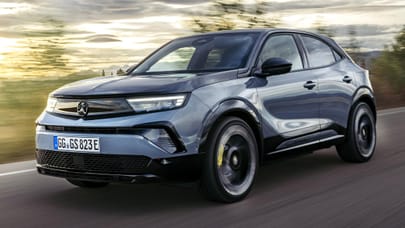
How will America’s Inflation Reduction Act boost EVs?
What is the Inflation Reduction Act? How does it affect cars? What do I watch now that Neighbours has finished? At least two of these questions answered
What is the Inflation Reduction Act?
It’s a gigantic piece of legislation that seeks to do quite a few things all at once, the main goal of which is... um. There are a lot of main goals.
So, reduce the budget deficit, get billion-dollar companies to pay tax, reduce inflation, close tax loopholes, invest in domestic energy production and manufacturing, reduce carbon emissions by 40 per cent by the year 2030 and even help with America’s health system. But as you’re reading Top Gear and not Axios, you probably came here for an explainer on the EV tax credit part.
The EV tax credit is kind of a refresh and revamp of the tax credits put in place early on in Barack Obama’s first term; obviously the landscape has changed quite a bit since 2009 so consider this a modern rethink of that policy.
So how will it affect electric cars?
Under the right circumstances, you’ll be able to claim a $7,500 credit on the purchase of a new electric vehicle and up to $4,000 or 30 per cent (whichever is less) on the price of an EV that’s two or more years old.
OK, gravy. How does that fit in with the Inflation Reduction Act, though?
The EV tax credit’s goal ties in with a few aims of the act – boosting local manufacturing and energy supply and reducing carbon emissions. And it has to do that while still keeping firm downward pressure on inflation. So, simple stuff, then.
How does it manage it, then?
The tax credit is only for cars, trucks and SUVs that meet certain criteria – they have to be electric (duh), the taxable income of the purchasers has to be under a certain threshold and there are strict requirements on where batteries and raw materials can come from – and where the car is built.
So by having an income threshold, it incentivises those who benefit from $7,500 the most. Think about what that sum of money means to you (or to us) versus what it’d mean to a multimillionaire. And because of the middle class’s static wages and increased costs of living, we’re not putting upward pressure on inflation, but rather chasing to keep up. So this benefits us without just hurting us later on when lettuce costs $15 per head.
As for the ‘MADE IN THE USA’ requirement... well, America has a long, proud history of protectionism (the 2008 bailout, the 49 per cent tariff on big-displacement motorbikes, and yes, the chicken tax), so it’s exactly what it seems.
Which cars are eligible for the benefit? Guessing not a lot...
It’s both broader than you’d think and narrower. We’ll explain.
First of all, the scheme caps the price of the EVs you can buy and still receive a credit – it’s $55,000 for a regular car, which really only gets you so far into the electric market. Model 3, yes; top-spec Model 3, no.
Looking for more from the USA?
Top Gear
Newsletter
Thank you for subscribing to our newsletter. Look out for your regular round-up of news, reviews and offers in your inbox.
Get all the latest news, reviews and exclusives, direct to your inbox.
But of course, being American legislation, there’s a handy carve-out for electric SUVs and trucks, which can cost up to $80,000. So that $7,000 price hike on the F-150 Lightning is handily soaked up by the $7,500 tax credit you’ll get for buying one. Just a coincidence, we’re sure.
Come on, man. Tell me which cars don’t get the credit...
Well, we don’t know the country of origin for every component and ounce of raw material in every EV – we know, we’re really falling down on the job.
But we can make a fair assumption that the credit won’t extend to the Kia EV6, Hyundai Ioniq 5, Jaguar I-Pace, Volkswagen ID.4, BMW’s i range, Audi’s e-trons and most of Polestar’s range. Or at least that if it does, it’s because these companies have moved production to the US. Much like car brands have done to get around local tariffs since time immemorial.
Trending this week
- Car Review
BMW 1 Series








